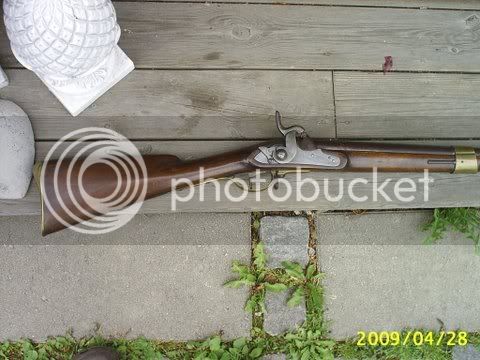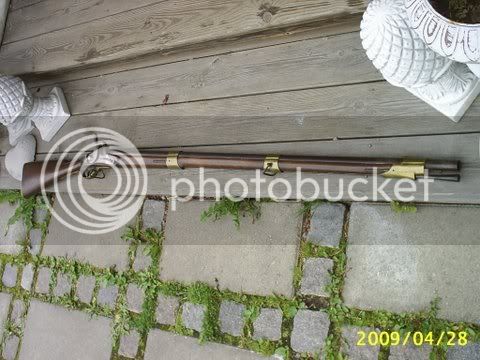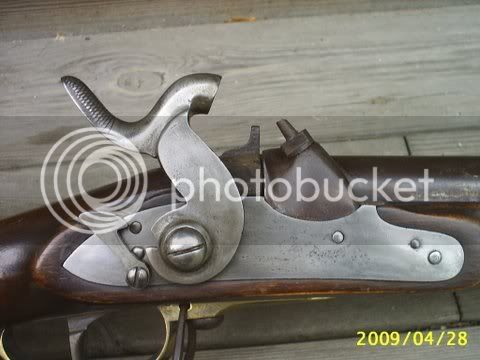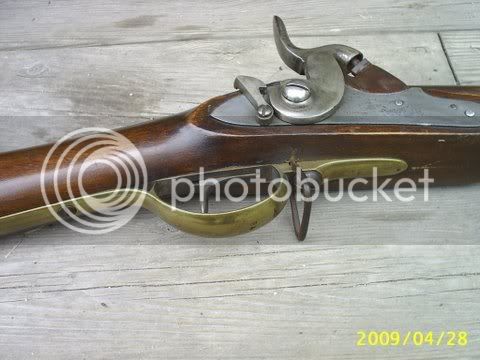Don't you think that you have answered your own question?
Yes, cleaning between shots has that much great effect on continued accuracy of these guns! Use a piece of flannel cotton ( cleaning patch), dampen it lightly- like by wiping it over a wet tongue-YOURS!-- and run it down the barrel IN STAGES. Pull it back a bit every once in a while. I do my barrel in 3rds, one third down, pull back out a bit, then another third, pull back a bit, and then to to bottom of my flintlock, with the flat faced breechplug. On any percussion gun, I stop my rod and the patch 1 inch ABOVE the breechplug, so that I am not shoving crud back and down against it's face. Push and packing crud back there makes it all the harder to remove.
I pull my rod and patch out of the gun, and inspect the patch. If its really damp, and greasy looking, I throw it in my garbage can( a used coffee can works here, but anything you have works as well) and dampen a second patch and this time go to the bottom of the barrel to pull out any crud that is back there. The second patch usually comes out looking "drier" than the first, so Now is the time to run a third patch down to dry the barrel complete in anticipation of the next load. ONLY when its actually raining do I find I have to run more than one drying patch down the barrel, but again, Reading the patches tells me what is going on in the barrel, and how much extra work to do.
There are alternative you can do to cleaning, but none of them have delivered the kind of accuracy I want from my gun.
The Wonderlube folks have bought into the hype of the company to just use MORE lube on your patches, and the lube will soften and clean out the crud. Some claim they shoot lots of bullets all day long without ever having to clean.
Then, others are using a much smaller diameter ball than their bore size, and thicker patches, and claim that this combination produces fine accuracy. It has not been so for me. I envy these guys, if they are actually getting consistent accuracy and can shoot all day without cleaning.
The back of my neck, and my own testing over many years off a bench rest, along with other members of my club, who also wanted to know the answers to consistent performance without cleaning, and then what kind of cleaning was necessary to give very good accuracy( "If you are going to have to go to the "trouble" of cleaning after every shot, you may as well figure out what gives you those ONE HOLE groups off a rest at 50 yards", said one of the senior members of my club back when I was a newbie).
Every time some new Lube came out with fantastic claims, the club members would all try the stuff out, with three or four guys testing the stuff in their guns to see what results occurred. The agreement was that if we got a ball stuck, the rest of us had to help them pull it( Before the days of CO2 devices). I helped pull a lot of lead balls stuck in barrels. It didn't matter what the brand or make of the gun was- old or replica. The guy who tried the undersized ball and thick patch, no matter how much lube he put on the patching, got 2" groups at best, and the group opened steadily to about 6" off a rest. We had other good shooters shoot these guys guns with the trial loads to see if the "human factor " explained the bad performance, but found that even our very best target shooters could not improve much on those groups. Yet, when that same gun was cleaned, and then shot with a larger- more common-- diameter lead ball, with a tight patch, and lube, it was capable of shooting one hole groups with all the shooters.
The same thing happened with using" More Lube". To be fair, we did these experiments in the Fall, after the Fall National Shoot at Friendship, where people picked up the new LUBE. The air is dryer in the Fall, and on some days darn right ARID- like you might expect to find out West on the high desert plateau. But those are our local hunting conditions here in Illinois. If you live in a coastal State, or hunt anywhere its mostly always humid, and never drops below 32 degrees, using more LUBE may just work better for you, than it did here for us.
I can assure you from both personal experience, and from observing all my friends struggle with their guns in January- March, that when its really below freezing, or below zero, Wonderlube is just not all that wonderful by itself. We began lubing our patches with ISP alcohol ( 92%) in the winter months, and also used the alcohol to clean the barrel, in lieu of spit. I have done some of my most accurate shooting in Below Zero temperatures, in January, when you went into the shooting shack to warm up around the pop bellied stove between shots fired.
Best wishes shooting the new " old " gun. It looks like a winner. :hatsoff:
P.S. I started out using Black Solve by Hoppes, and we have also tried the newer solvent/lube show above. It works fine in warm or hot conditions. Its not so good in freezing temperatures, because it is water based. Some guys add anti-freeze to the mix for wintertime use- it might work. Water will foul your powder charge unless you use an OP wad on top of the powder to act both as a fire barrier, and to stop fluids from seeping back into the powder from your patch.
Others do as I have decided to do, and simply use alcohol in freezing conditions.
Since Sweden is a bit NORTH of most of the lower 48 states here on the other side of the pond, I suspect that you probably have more Winter months than summer months during which you can shoot. Take that into consideration when working up loading techniques, and when accepting advice from all of us. :thumbsup:













